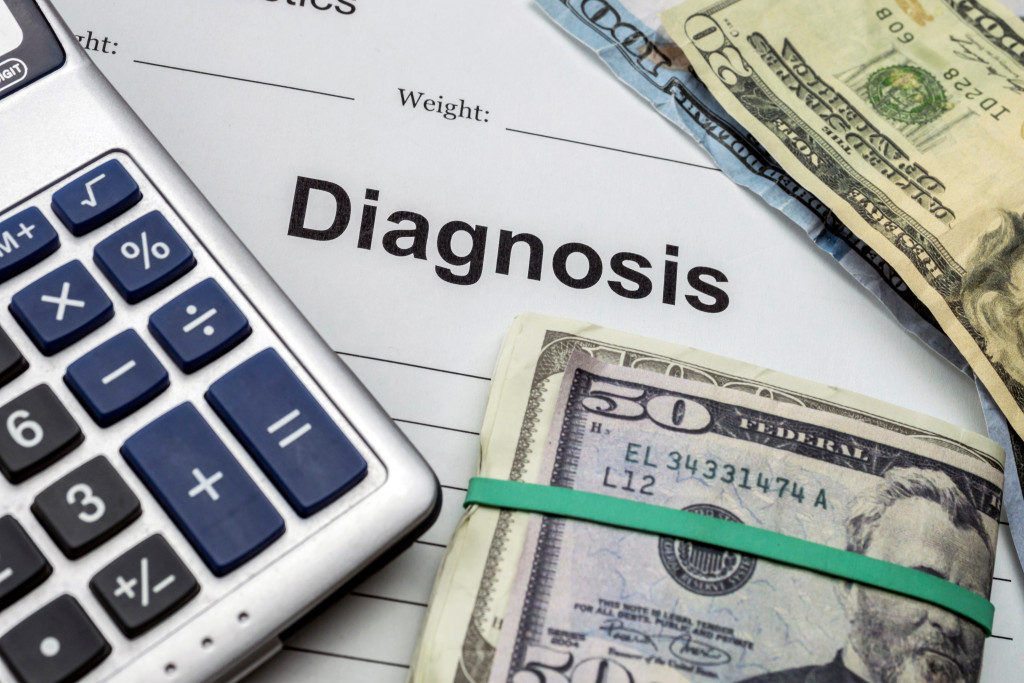Disclaimer: This website provides health information for educational purposes only and is not a substitute for professional medical advice, diagnosis, or treatment. Always seek the guidance of a qualified healthcare provider with any questions you may have.
Bankruptcy is something that many people fear in the United States, but it’s harder to avoid it than you think, and that’s because one of the leading reasons for bankruptcy is medical bills.
It’s estimated that 40% of overall bankruptcies in the United States are due to medical bills. The general medical debt of the country is estimated to be around $160 billion. Paying medical bills is hard, especially if you expect to pay approximately $5,000. But there are options for this, and one of your very first options is to make a bold choice to open a high-yield savings bank account.
High-yield Savings Bank Account
One of the best ways to pay off your medical bills is to anticipate them. This is best done by having high-yield savings account that you’ve been saving into for an emergency. That way, when unexpected medical bills happen, you already have the money to pay for them.
This option is best if you don’t have any other debts and can afford to save up every month. You can start your savings account by first searching for the best personal online bank account in your area. Various banks have different offers, so it’s best to compare and find the best option for you.
Once you find the right bank, you must open a savings account. This is best done by visiting the bank’s website and finding the “Open an Account” page. After that, you’ll need to select “Savings Account” as the type of account you want to open.
The next step is to fill out your personal information. The bank will ask for your name, address, date of birth, Social Security number, and other information. Once you’ve filled out all the necessary information, you’ll need to fund your account.
You can transfer money from your checking account or deposit cash or a check into your new savings account. Most banks have a minimum deposit requirement, so be sure to check what that is before you open your account.
Once your account is open, you’ll need to start saving. A good rule of thumb is to save at least 10% of your monthly income. But if you can afford it, try to save even more. The more you save, the better prepared you’ll be for unexpected medical bills.

Personal Loan
Another option to pay your medical bills is to take out a personal loan. This can be a good option if you have other debts that you’re trying to consolidate or need a lump sum of cash to pay off your medical bills all at once.
Personal loans usually have fixed interest rates, so you’ll know exactly how much your monthly payments will be. And because personal loans are unsecured, you won’t need to put up any collateral, like your home or car.
To get a personal loan, you’ll first need to compare lenders to find your best interest rate and terms. Once you’ve found the right lender, you’ll need to complete an application. The lender will then check your credit score and income to see if you’re eligible for the loan.
If you are, you’ll need to provide documentation, like your driver’s license, Social Security number, and proof of income. Once you’ve submitted all the necessary documentation, the lender will give you a loan offer which you can review. If you think the offer is for you, you can get the loan to pay your medical bills.
Medical Bill Payment Plan
If you can’t afford to pay your medical bills all at once, you can set up a payment plan with your healthcare provider.
Most hospitals and doctor’s offices will be willing to work out a payment plan with you. To do this, you’ll need to contact their billing office and explain your financial situation. Once you’ve done that, the billing office will work with you to set up a monthly payment plan.
This is a good option if you can’t afford to pay your medical bills all at once but can afford to make monthly payments. Stay on top of your payments so you don’t fall behind.
Hardship Program
You may be eligible for a hardship program if you genuinely can’t afford to pay your medical bills. Hardship programs help people who cannot pay their medical bills.
You’ll need to contact your healthcare provider’s billing office to see if you’re eligible for a hardship program. They will review your financial situation and let you know if you qualify for the program.
If you do qualify, the billing office will work with you to set up a monthly payment plan that you can afford. This is a good option if you’re struggling to pay your medical bills and can’t afford any of the other options on this list.
Healthcare is essential for every person, but it can be costly. If you’re struggling to pay your medical bills, these are some of your best options. Use these options to get the care you need without going into debt.




